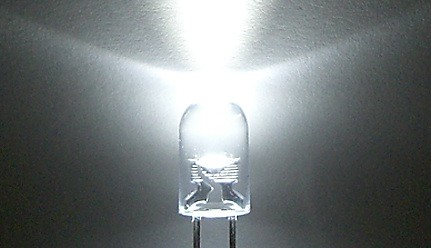Development Kit Converts LEDs into Data Transmitters
October 10, 2012
on
on

PureVLC brings its first Visible Light Communication (VLC) product to the market.
VLC transmits data wirelessly using visible light as its medium instead of radio waves. I wrote about VLC over a year ago when Harold Haas, professor of Mobile Communications at the University of Edinburgh, successfully demonstrated the VLC technology at a TED conference. He streamed a HD video to a screen using a LED light bulb as transmitter.
Haas co-founded PureVLC, a corporate spin-off of the university’s research project, to turn the technology into commercially viable devices. The company is now beta-testing its first product: the Smart Lighting Development Kit (SLDK).
Using the visible light spectrum to transfer data wirelessly will ease the burden on the overcrowded radio frequencies. The visible light spectrum is 10,000 larger than that of radio. VLC can potentially realize ultra high-speed transfer rates and high data density.
The SLDK enables manufacturers to add visible light communications to their existing lighting systems. The kit consists of a VLC ceiling unit and a VLC desktop unit. The manufacturer provides a LED light fixture and a standard LED driver to regulate the electricity powering the LEDs.
The ceiling unit is fixed between the LED driver and the light fixture so it can control the current going to the LEDs. Data is transmitted by changing the density of the light. A lower density represents a zero and higher density a one. Because the light changes superfast it is invisible to the human eye and can still function as normal lighting.
A standard Ethernet port connects the ceiling unit to a data network. The unit encodes the data onto the current feeding the LEDs. The desktop unit receives the data, decodes it and transfers it to a laptop or desktop computer. It can also send data to the ceiling unit.
VLC has its limitations. Other than radio waves it can’t penetrate barriers and needs line of sight to establish a connection. It is suitable for establishing wireless networks in homes, offices and places where radio signals can interfere with sensitive electronic equipment such as hospitals and airplanes.
VLC transmits data wirelessly using visible light as its medium instead of radio waves. I wrote about VLC over a year ago when Harold Haas, professor of Mobile Communications at the University of Edinburgh, successfully demonstrated the VLC technology at a TED conference. He streamed a HD video to a screen using a LED light bulb as transmitter.
Haas co-founded PureVLC, a corporate spin-off of the university’s research project, to turn the technology into commercially viable devices. The company is now beta-testing its first product: the Smart Lighting Development Kit (SLDK).
Using the visible light spectrum to transfer data wirelessly will ease the burden on the overcrowded radio frequencies. The visible light spectrum is 10,000 larger than that of radio. VLC can potentially realize ultra high-speed transfer rates and high data density.
The SLDK enables manufacturers to add visible light communications to their existing lighting systems. The kit consists of a VLC ceiling unit and a VLC desktop unit. The manufacturer provides a LED light fixture and a standard LED driver to regulate the electricity powering the LEDs.
The ceiling unit is fixed between the LED driver and the light fixture so it can control the current going to the LEDs. Data is transmitted by changing the density of the light. A lower density represents a zero and higher density a one. Because the light changes superfast it is invisible to the human eye and can still function as normal lighting.
A standard Ethernet port connects the ceiling unit to a data network. The unit encodes the data onto the current feeding the LEDs. The desktop unit receives the data, decodes it and transfers it to a laptop or desktop computer. It can also send data to the ceiling unit.
VLC has its limitations. Other than radio waves it can’t penetrate barriers and needs line of sight to establish a connection. It is suitable for establishing wireless networks in homes, offices and places where radio signals can interfere with sensitive electronic equipment such as hospitals and airplanes.
Read full article
Hide full article



Discussion (3 comments)
Dieter Hoffmann 12 years ago
Yonghan 12 years ago
Alfred 11 years ago